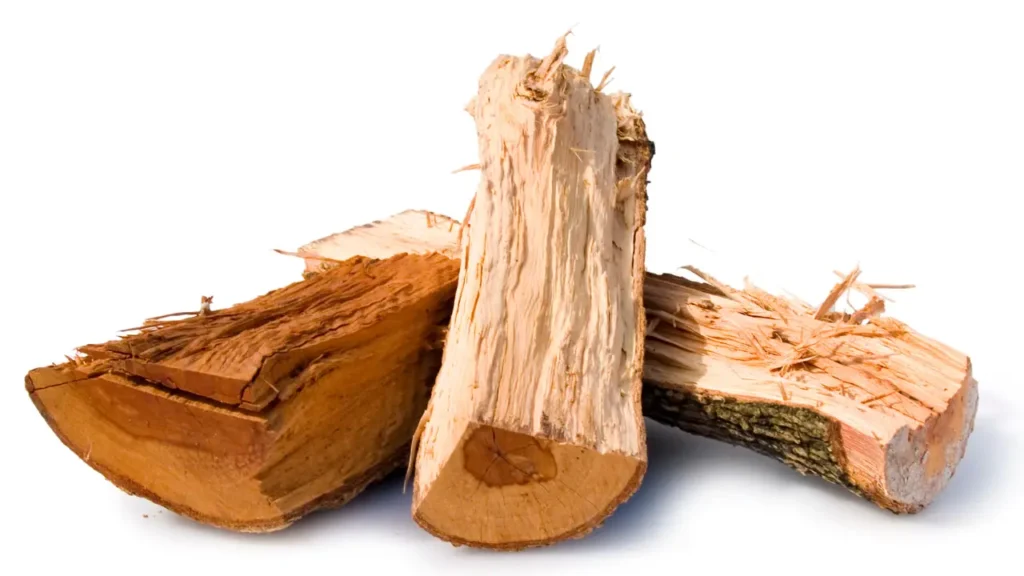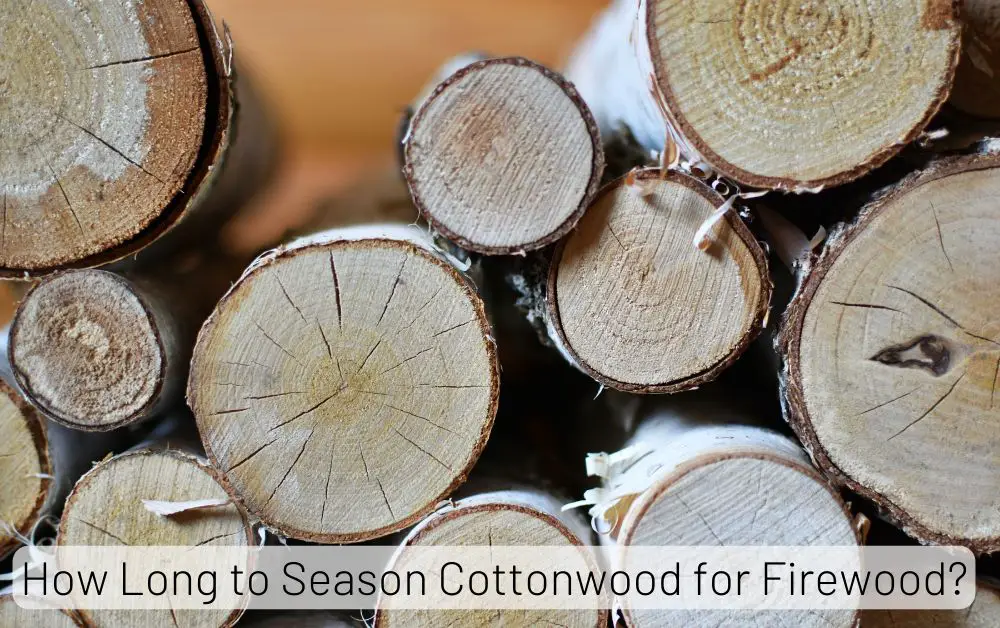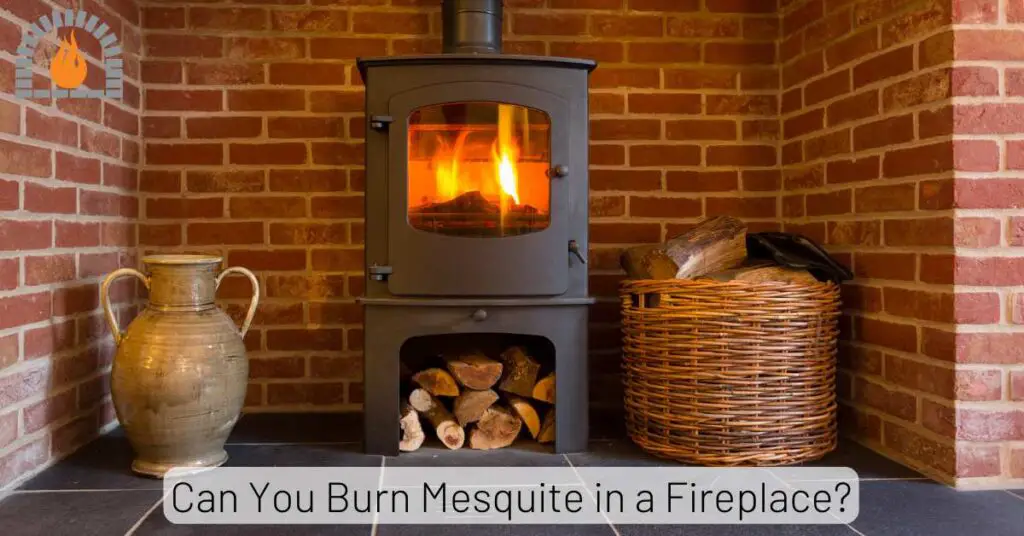Wood-burning stoves have long been popular for creating cozy warmth and reducing reliance on electricity or gas for heating. But finding affordable wood to keep the stove running efficiently can be challenging.
Whether you’re looking to save money on heating costs or just enjoy the charm of a wood fire, choosing the right wood is essential.
This guide breaks down the best budget-friendly cheap wood for wood burning stoves and fireplaces, how to source them, and ways to ensure you’re getting the best heat output for the lowest price.
What Are the Cheapest Woods for Wood-Burning Stoves?
Softwoods such as pine and fir are also economical and readily available in many areas, though they burn faster and may require more frequent refueling. In hardwoods there are a few top options that offer both cost-effectiveness and efficient heating. Hardwoods like oak, maple, and hickory are typically inexpensive, especially if sourced locally or purchased in bulk.
These woods burn longer and produce more heat, making them a popular choice among budget-conscious stove owners.
What Makes Wood Cheap for Burning?
Several factors influence wood pricing, including availability, wood type, and season. Generally, softwoods tend to be cheaper than hardwoods due to their faster growth rate and ease of sourcing.
Locally sourced wood is often more affordable than imported varieties, and bulk buying is another effective way to save.
Cheap Wood for Wood Burning Stoves & Fireplaces
| Wood Type | Log Firewood Price per Cord | Seasoned Firewood Price per Cord | Fresh-Cut Firewood Price per Cord | Characteristics |
|---|---|---|---|---|
| Pine | $100 – $150 | $200 – $300 | $100 – $150 | Burns quickly; produces more creosote |
| Poplar | $100 – $150 | $200 – $250 | $100 – $150 | Burns poorly; low heat output |
| Cedar | $150 – $200 | $250 – $400 | $150 – $200 | Pleasant aroma; burns well but low heat |
| Willow | $100 – $150 | $200 – $250 | $100 – $150 | Poor burning quality; little flame |
| Hazel | $150 – $200 | $300 – $400 | $150 – $200 | Burns fast; good heat output |
| Holly | $150 – $250 | $250 – $400 | $150 – $200 | Fast burning; bright flame, low heat |
| Cypress | $150 – $200 | $250 – $350 | $150 – $200 | Burns quickly; best mixed with other woods |
| Chestnut | $150 – $200 | $250 – $400 | $150 – $250 | Moderate flame and heat output |
| Douglas Fir | $100 – $200 | $200 – $300 | $100 – $200 | Low heat output; not very good for burning |
| Elm | $200 – $300 | $300 – $450 | $200 – $300 | Good heat but needs seasoning |
| Alder | $100 – $150 | $250 – $350 | $100 – $200 | Burns quickly; moderate heat output |
| Larch | $100 – $150 | $250 – $300 | $100 – $200 | Produces soot; burns fast |
| Sweet Chestnut | $150 – $200 | $250 – $400 | $150 – $250 | Spits excessively when burning |
| Sycamore | $150 – $250 | $250 – $400 | $150 – $200 | Moderate heat output; burns well |
| Birch | $200 – $300 | $300 – $450 | $200 – $300 | Burns quickly; good heat and aroma |
| Blackthorn | $250 – $400 | $400 – $500 | $250 – $400 | Good firewood; burns slowly with good heat |
| Hawthorn | $250 – $400 | $400 – $500 | $250 – $400 | Good heat output; difficult to split |
| Yew | $200 – $300 | $300 – $450 | $200 – $300 | Slow burning with good heat output |
| Maple (Soft) | $150 – $250 | $300 – $450 | $150 – $250 | Moderate heat output; good flame |
| Maple (Hard) | $200 – $300 | $400 – $500 | $200 – $300 | Good heat and burn time |
| Rowan | $150 – $250 | $300 – $450 | $150 – $250 | Good burning quality; moderate heat |
| Elder | $100 – $150 | $200 – $250 | $100 – $150 | Burns quickly; produces lots of smoke |
| Mulberry | $250 – $400 | $400 – $500 | $250 – $400 | Good aroma and moderate burn time |
| Locust | $250 – $450 | $400 – $600 | $250 – $450 | Very dense, long-lasting burn |
| Beech | $250 – $400 | $400 – $500 | $250 – $400 | Good flame and slow burn rate |
| Ash | $250 – $400 | $400 – $500 | $250 – $400 | Excellent burning qualities, low moisture |
| Cherry | $250 – $400 | $400 – $500 | $250 – $400 | Pleasant aroma, good heat output |
| Pear | $250 – $400 | $400 – $500 | $250 – $400 | Slow-burning with pleasant smell |
| Apple | $250 – $450 | $400 – $550 | $250 – $450 | Sweet aroma, burns slowly and steadily |
| Hackberry | $150 – $250 | $300 – $450 | $150 – $250 | Moderate heat output; burns well when seasoned |
| Acacia | $250 – $450 | $400 – $550 | $250 – $450 | Dense wood, burns hot and long-lasting |
| Sassafras | $100 – $200 | $250 – $400 | $100 – $200 | Pleasant smell; burns quickly with good flame |
| Cottonwood | $100 – $150 | $150 – $200 | $100 – $150 | Low quality, produces a lot of smoke |
Factors Affecting Burning Wood Price

1. Wood Type and Quality
- Different wood types burn differently, impacting their price. Hardwood (e.g., oak, hickory, maple) is often more expensive than softwood (e.g., pine, fir) due to its density, longer burn time, and higher heat output.
- Quality also matters; seasoned wood with low moisture content is more valuable because it burns efficiently and produces less smoke.
2. Supply and Demand
- During colder seasons or in areas where wood stoves and fireplaces are common, demand for firewood spikes, which can lead to price increases.
- Environmental factors like wildfires or logging restrictions may also reduce supply, raising prices.
3. Location and Transportation Costs
- Wood must be transported, and the distance between the forest and the buyer affects costs. Areas further from timber sources will likely have higher wood prices due to transportation expenses.
- Rural areas near wood supplies may have lower firewood prices compared to urban locations.
4. Seasoning Time and Process
- Seasoned wood (typically dried for 6-12 months) costs more than green (freshly cut) wood because it involves additional time and resources.
- Properly seasoned wood, which has around 20% moisture content, provides better heat and less creosote buildup in chimneys, making it more desirable and pricier.
5. Cutting and Splitting Labor
- Firewood that has been cut, split, and bundled to fit standard wood stoves or fireplaces is more convenient, and therefore, more expensive.
- If the wood requires minimal or no splitting, it may be cheaper but might need extra effort from the buyer.
6. Economic and Environmental Policies
- Environmental regulations, such as restrictions on logging certain tree species or limits on wood harvesting, can impact wood prices by reducing availability.
- Economic inflation can also raise costs, influencing expenses like transportation, labor, and wood processing.
7. Availability of Alternative Heating Fuels
- In areas where other fuels (like propane, electricity, or pellets) are affordable and accessible, wood prices might remain lower due to less demand.
- When fossil fuel prices rise, firewood demand often increases as people look for alternative heat sources, which can drive up wood prices.
8. Weather Conditions
- Severe winters with high heating demands lead to a rise in firewood consumption, often increasing prices.
- Milder winters can reduce demand, potentially lowering prices for the season.
Essential Consideration for Selecting Firewood
Choosing the right firewood is key for a warm and efficient burn. Here are some essential points to consider:
Hardwood, like oak, maple, and hickory, is ideal for firewood due to its dense structure and longer burn time. Softwoods, like pine and fir, ignite easily but burn faster, making them better for kindling or outdoor fires.
Seasoned or kiln-dried wood is best. Ideally, firewood should have a moisture content below 20%. Wet wood creates excess smoke and creosote, which can clog chimneys.
Standard-sized pieces (about 16 inches long) fit most fireplaces. Splitting logs also exposes more surface area, helping them dry faster and burn more efficiently.
Proper storage is vital. Stack firewood off the ground, covered on top, with air circulation on the sides. Seasoned wood stored this way remains dry and ready to burn.
Denser hardwoods produce more heat per log, making them more efficient. Softwoods are less efficient and more suitable for outdoor fires or kindling.
Choose locally sourced firewood to reduce carbon footprint. Some woods, like ash and beech, are considered sustainable and grow back faster than others.
Affiliate Disclosure: Fireplaceadviser.com is a participant in the Amazon Services LLC Associates Program. We may earn a commission when you click on certain links on this site and purchase.

Hello!! I am Jamal Khan. I often fix my home electric heaters and gas stove problems and research the common issues in the heating units to improve my knowledge and expertise. The aim of establishing fireplaceadviser.com is to share my expertise and knowledge with my audience.


















